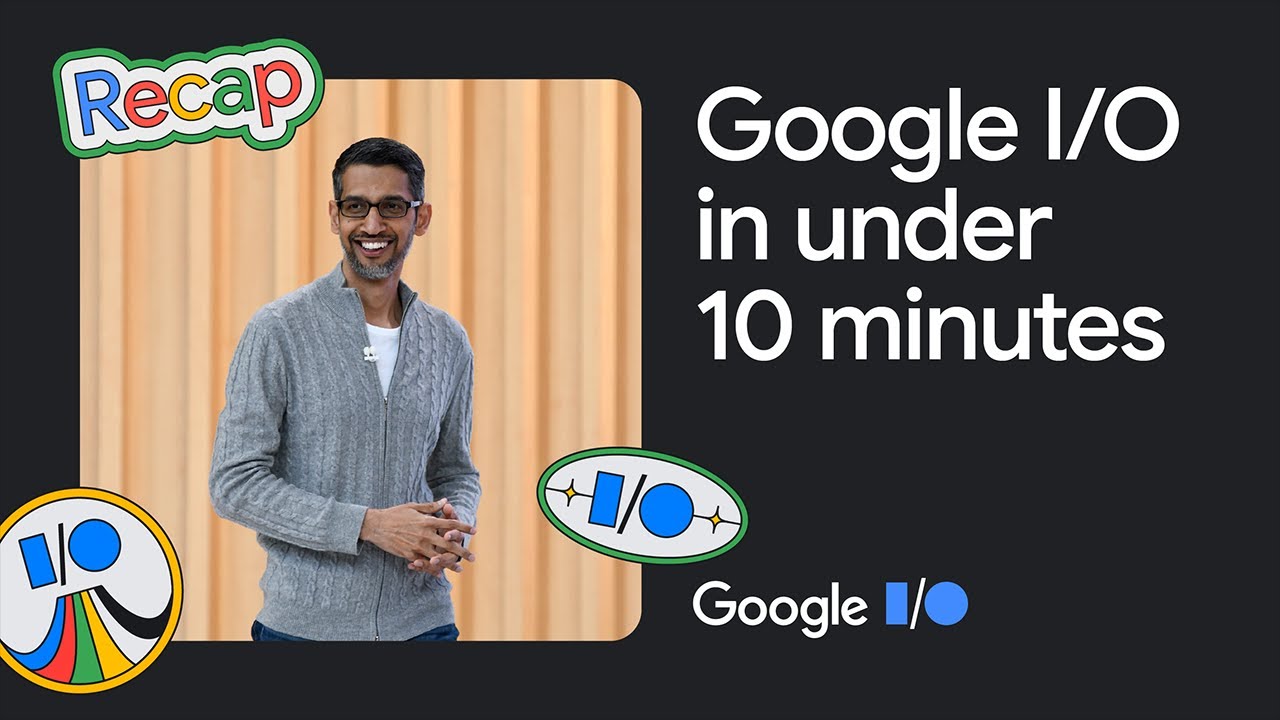Google I/O '23 In Under 10 Minutes
Unleash Your Creative Genius with MuseMind: Your AI-Powered Content Creation Copilot. Try now! 🚀
Introduction
In a world where technology is constantly evolving and advancing, Artificial Intelligence (AI) is at the forefront of innovation. With AI, our devices have become more intelligent and responsive, making our lives easier and more convenient. And in recent years, there has been a significant leap forward with the introduction of generative AI. This new technology allows our devices to not only understand and interpret information but to also create and generate new content. In this article, we will explore some of the exciting developments in generative AI and how it is transforming our digital experiences.
The Magic of Generative AI: Enhancing Photos and Videos
One of the most fascinating applications of generative AI is in the field of photo and video editing. With the use of semantic understanding and generative AI, devices are now capable of much more advanced editing. For example, the Magic Editor feature allows users to easily reposition and edit elements in photos. Say you have a great photo of your child, but they are not the center of attention. With Magic Editor, you can easily move and reposition the subject, recreating missing elements and even changing the lighting for a consistent and polished look. It's like magic!
But the capabilities of generative AI go beyond just photo editing. Imagine being able to see a preview of your entire trip before even embarking on it. This is made possible with Immersive View for Routes. By combining generative AI with mapping technology, devices can now provide users with immersive visualizations of their planned routes, giving them a realistic and detailed understanding of their journey. It's like having a personal tour guide right at your fingertips.
Empowering Developers with Domain-Specific Knowledge
Generative AI is not limited to just enhancing visual content. It is also being used to empower developers with specialized knowledge. Google's PaLM 2 model, for example, is a powerful tool that can be fine-tuned for specific domains. Whether it's security, healthcare, or other industries, PaLM 2 can be customized to provide accurate and reliable information that is tailored to specific use cases. This fine-tuning process has shown remarkable results, with a 9x reduction in inaccurate reasoning compared to the base model.
Another exciting application of generative AI is in programming assistance. Google's AI-powered assistant, Bard, has made significant advancements in its math, logic, and reasoning skills. It can now help developers with programming tasks, generating code scripts that are not only accurate but also well-formatted and easy to read. Bard also has the ability to tap into Google's services and partner extensions, allowing developers to achieve things that were previously unimaginable.
Storytelling and Creativity: Unleashing the Power of AI
Generative AI is not just limited to technical and practical applications. It is also being harnessed to unlock new levels of creativity and storytelling. Take Google Slides, for example. People often use Slides for storytelling purposes, and now generative AI can take it to the next level. By using a poem as a prompt, generative AI can generate images that complement the story being told. This opens up a whole world of possibilities for creative expression and narrative development.
With the introduction of Sidekick, a side panel feature, collaborating and brainstorming with generative AI becomes even more effortless. Sidekick reads and processes documents, offering suggestions and prompts to enhance storytelling and creative projects. This collaborative experience will soon be extended to Duet AI for Workspace, enabling seamless interaction and cooperation between humans and AI.
Responsible AI: Striking the Right Balance
While the advancements in generative AI are undoubtedly exciting, it is important to approach this technology with responsibility and awareness. AI is an emerging technology, and as such, it requires careful consideration and ethical guidelines. Google understands the importance of responsible AI and is actively working towards ensuring that AI-generated content can be evaluated and verified.
Google is introducing two new tools to help users evaluate images and their reliability. The "About This Image" tool in Google Search provides valuable information about an image, such as its origins and similar appearances. Additionally, every AI-generated image will have metadata and markup to provide context, even when shared outside of Google's platforms. This commitment to transparency and accountability is crucial in building trust and fostering responsible AI usage.
Conclusion
The rise of generative AI is revolutionizing the way we interact with technology. From enhancing our visual content to empowering developers and unleashing creativity, generative AI is making our devices smarter and more intuitive than ever before. However, it is essential to also ensure responsible AI usage, with transparency and ethical considerations at the forefront. As we continue to push the boundaries of AI, collaboration between developers, users, and AI systems will be key to unlocking the full potential of this exciting technology. So let's embrace the magic of generative AI and create a future that is both intelligent and responsible.

Related Recaps
- She Was Forced To Marry The Enemy Prince | RECAP
- Brandweerman Sam Nederlands | Een knalfeest - 5 afleveringen | Kinderfilms
- Roanoke Rail Yard Dawgs are SPHL champs
- China ends Taiwan drills after practicing blockades
- Kofi Asante bemoans and reveres the advantages of mining to mining villages with bitterness.